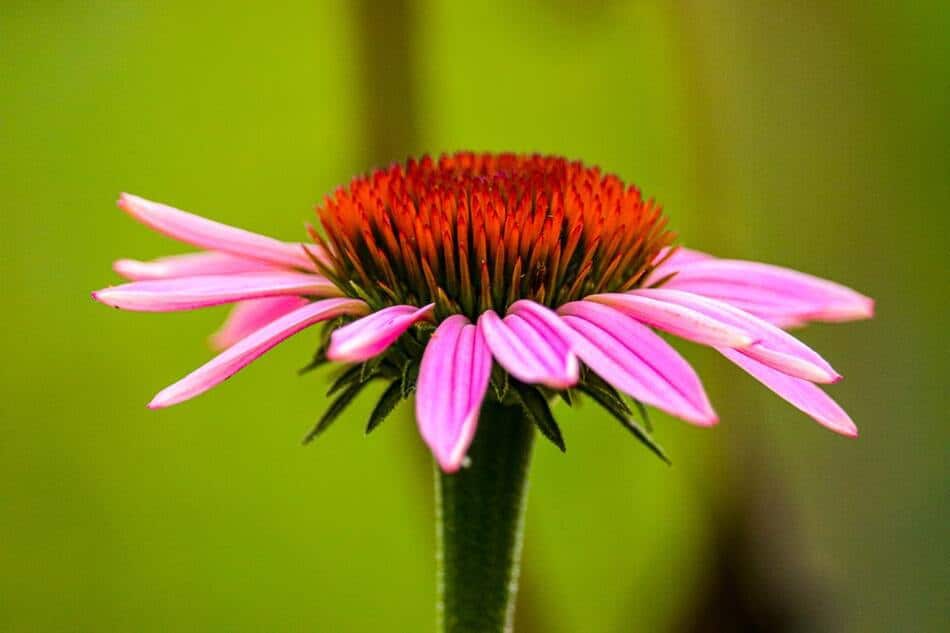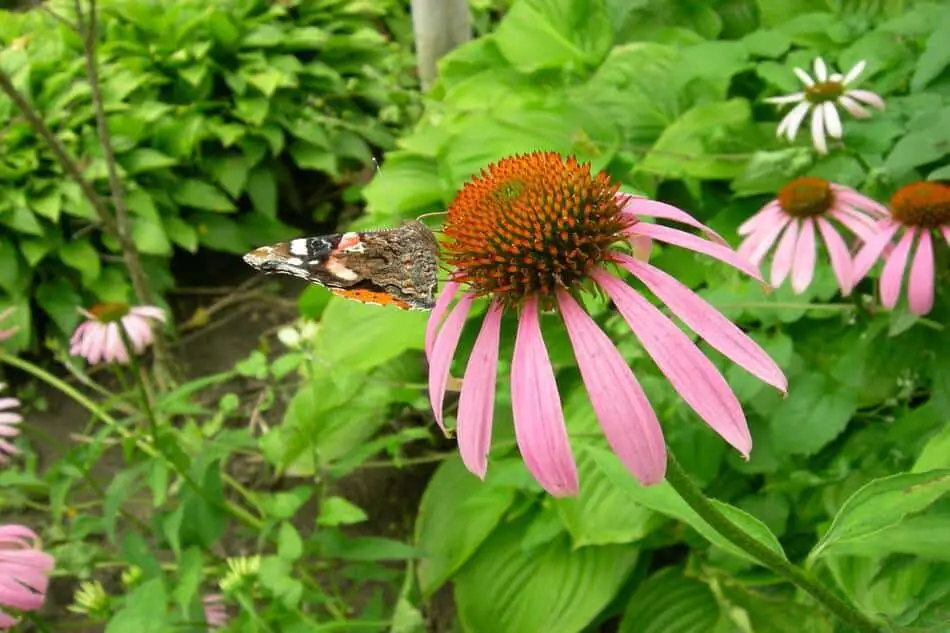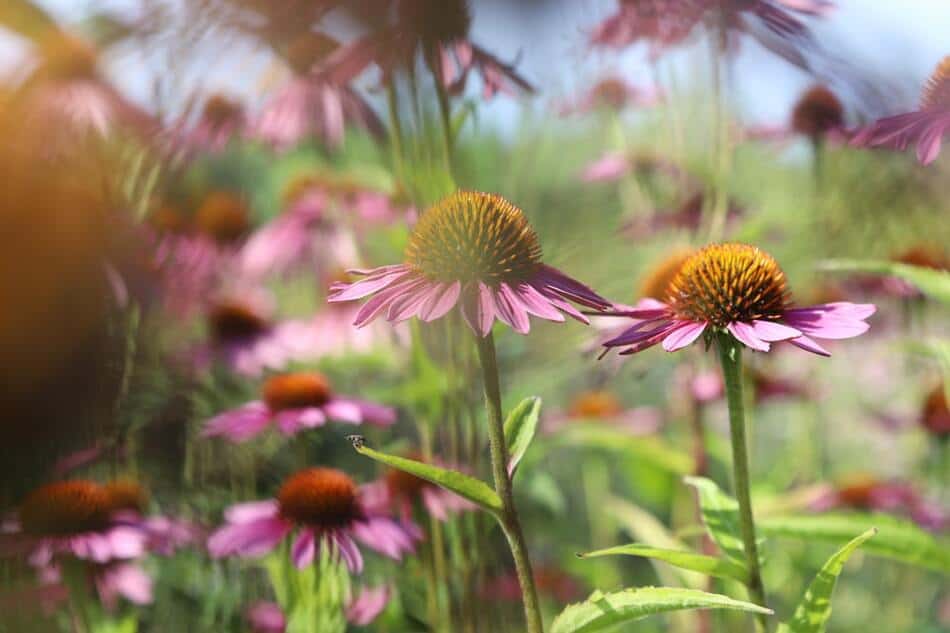Echinacea is one of the most widely used herbs in the United States. It is a Native American herbal medicine known for its prickly scales on the top of its huge conical seed head, which resembles hedgehog spines (Echinos come from Greek for hedgehog). Moreover, Echinacea seeds are used to grow this herb widely. So, what do echinacea seeds look like?
Echinacea seeds look like rice. They are small and have a triangular shape. These seeds can be obtained from the echinacea plant using simple techniques. I recommend collecting echinacea seeds in the fall season.
It is also referred to as coneflower. Echinacea was used by Native Americans for more than 400 years, according to archaeologists, who have discovered evidence that the plants were used to treat infections and wounds as well as a “general cure-all.”

Echinacea can treat syphilis, blood poisoning, scarlet fever, diphtheria, and malaria throughout history. Despite the fact that this plant was popular in the eighteenth and nineteenth centuries, its usage began to drop in the USA after antibiotics came into play.
Echinacea became more famous in Germany in the twentieth century. Many scientific studies on echinacea took place there.
Echinacea is still widely in usage today to reduce the duration and severity of the common cold and flu, as well as symptoms such as a sore throat (pharyngitis), cough, and fever. Many herbalists advocate echinacea use to help strengthen the immune system and fight infections.
What Do Echinacea Seeds Look Like?
Echinacea seeds are tiny grains in a triangle shape that look like rice. After harvesting, remove the white parts from the plants.
A kitchen strainer may help you with this. The chaff will pass through the strainer. The triangular echinacea seeds will fall ultimately.
How To Save Echinacea Seeds?
It’s also a good time to gather Echinacea seeds during the fall. If you don’t collect them, they’ll drop to the ground. Wind and animals often carry these seeds, resulting in no damage.
If you want to accumulate your seeds, you will have to wait until the situation is right. Yield seeds from any 2-year-old plant. Avoid watering the plants in the late summer; it is a drought-resistant plant and too much water may harm its seeds. In the fall, observe the seed heads as they wilt; they will start to swell up. Collect the seeds when they are full rather than flat.
What Are The General Uses Of Echinacea?
Echinacea has been studied in a variety of laboratory and animal models, and it appears to have immune-boosting, pain-relieving, inflammation-reducing, and hormonal, antiviral, and antioxidant effects.
Echinacea is frequently used by professional herbalists to cure urinary infections, vaginal infections, ear problems, sinusitis, hay fever, and wounds that are healing slowly.
Preparatory studies show that echinacea may help prevent colon tumors when integrated with cichoric acid. Echinacea extract has an antiviral effect on HSVI-induced recurrent cold sores, according to one study.
How To Grow Echinacea?
Echinacea is a perennial plant that grows in zones 3-9 and flowers mid to late summer. Echinacea comes in three different varieties, known as purple coneflower, E. Augustifolia, and Echiniaria Pallida. The properties of Echi Nacii are strongest among the three.
Echinacea is an endangered species. So growing your own Echinacea or purchasing it from a store is preferred over overharvesting from the wild. For more information about endangered plants, visit United Plant Savers.

To produce Echinacea from seeds, you must artificially stratify them unless you live in a very chilly climate. You may plant seeds in late fall or early spring if you have consistently cold winters.
Plant them about a foot apart. In poor soil, Augustifolia can thrive. E. Purpurea and E. Pallida like richer soil that is moistened with water on a regular basis. All thrive in full sunshine. Medicinal plants benefit from well-drained dirt the most.
They will flourish in damp soil, although their qualities will diminish.
How To Harvest Echinacea?
Let me walk you through the essential steps of harvesting echinacea.
- The root and aerial parts of the Echinacea plant are utilized. The aerial portions are most often used for herbal teas, but the roots contain the plant’s most potent medicine.
- The aerial parts are ready for harvesting in the second year of development. It’s as simple as cutting the stem above the lowest pair of leaves to collect the aerial parts.
- Remove the leaves and flower buds from the stem and lay them flat to dry. This may be done at any time of the year. When pruning Echinacea, this is a good time to do it.
- Harvest roots of a 2-3-year-old plant in the spring or fall. The roots of E. Augustifolia are fibrous, while those of E. Purpurea are tap-rooted. To remove Echinacea roots with a shovel or a garden fork, grab them out of the soil around the Echinacea plant.
- I employ a large shovel and dig up the entire root ball of the plant. You may take pieces from the root ball to harvest or cut away the entire plant to gather roots.
The entire plant might be removed to make room for new Echinacea plants. You may thin out your Echinacea patch by removing the whole plant. You may either harvest parts of the root ball or leave the remaining roots in the ground to grow new ones if you choose to only remove portions of the root ball.
Preserving Echinacea
To keep your leaves and buds, simply dry them as needed and store them in an airtight container in a dark place until you’re ready to brew some tea.
To keep your roots, dry them and store them in a jar or other container for later decoctions, or start a tincture. Echinacea tincture is one of my favorite things to have on hand at all times, so that’s where most of my roots go.
After the roots harvesting, shake any soil off of them. Rinse them under cold water and pat them dry next. We use a hose with a spray head to really get the dirt off outside, then put them in a pail of water to finish removing the rest of the dirt.
After you’ve brushed away the dirt from the roots, you may either dry them or tincture them. Both options will necessitate the uprooting or trimming of the roots into little pieces. Kitchen scissors are ideal for this!
To dry your Echinacea roots, place the trimmed pieces in a well-ventilated area on a screen and expose them to indirect light. Allow them to sit for at least two weeks. Place them in an airtight container outside of direct sunshine once they’re dry.
Bottom Line
Echinacea seeds are very useful and you can easily obtain them with care from the echinacea plant. I recommend keeping them with care and planting them. Now, you can learn how to plant echinacea seeds. Read my article on planting echinacea seeds the right way.
Read More!
How to Make Rosehip Essential Oil?
Using Rosehip Essential Oil for Acne!
What blends well with Peppermint Essential Oil?

